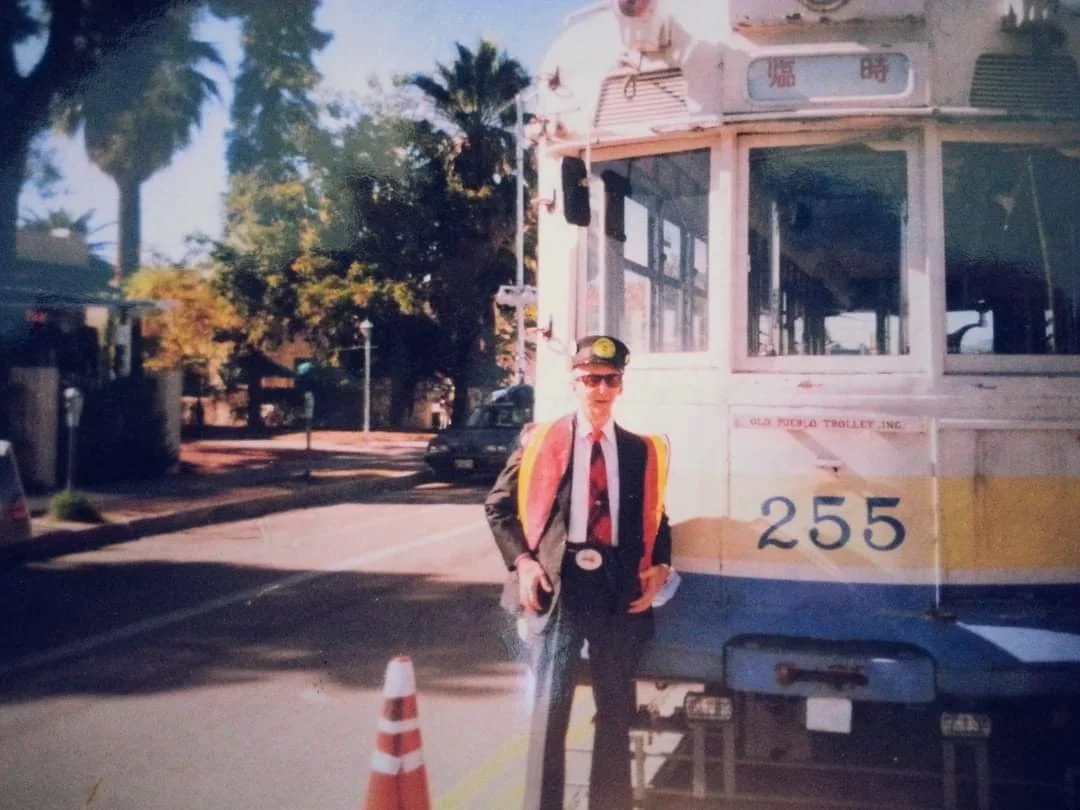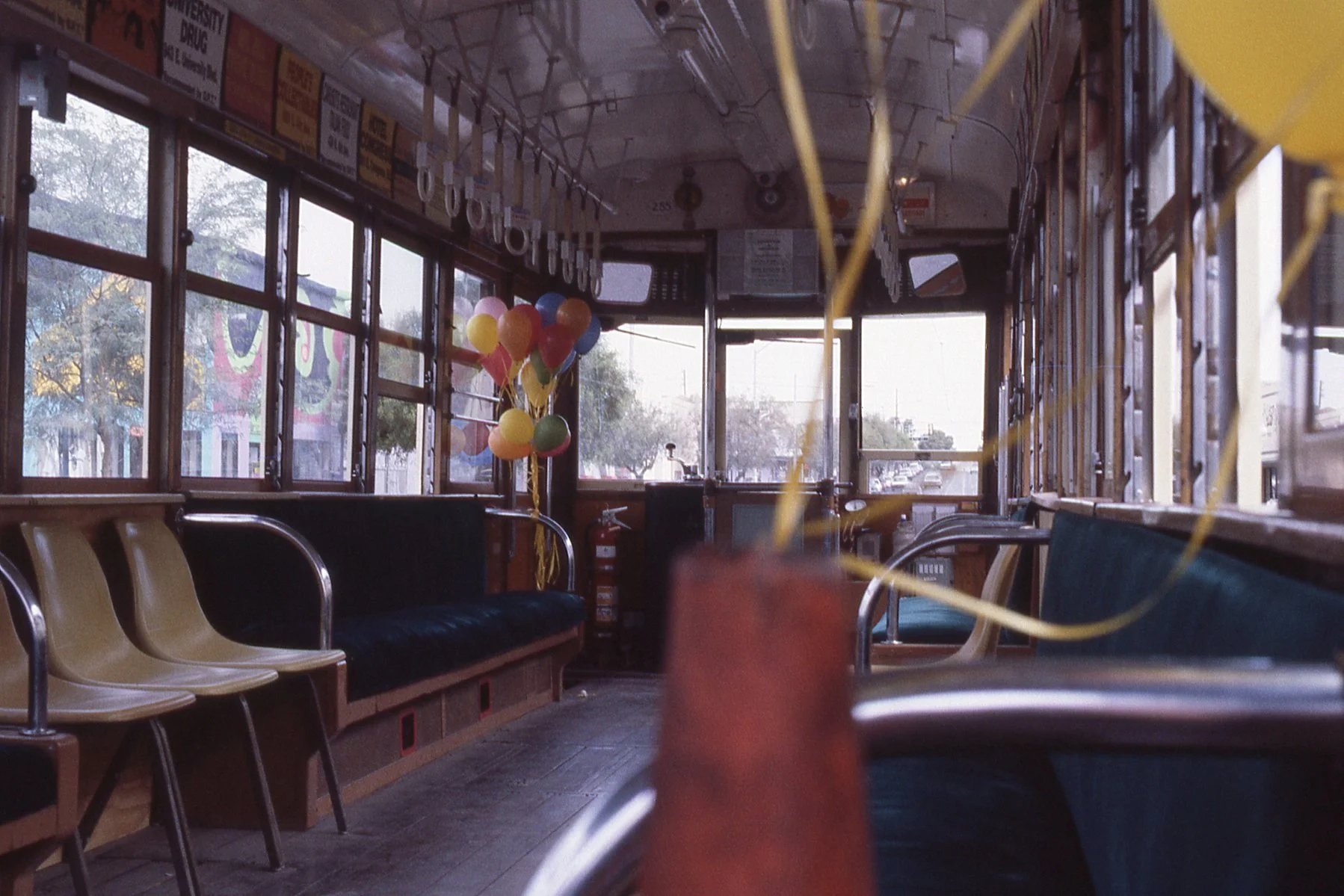Kyoto City Transit Bureau #869
#869 in the collection today
Background
The reconstruction of Japan during its occupation by allied forces after World War II included the re-manufacture of 1920s vintage streetcars. Due to their age, this was a temporary measure. As soon as possible, hundreds of new streetcars were constructed to a more or less standardized design. Factories that had once produced aircraft parts were now used to build trams.
Service History in Japan
Built in 1953, #869 was one of 90 manufactured for Kyoto City Transportation Bureau between 1950 and 1955. As originally constructed, it was designed for two-man operation (motorman and conductor) with four doors, one in each corner.
In 1969 it was renumbered #1869 and converted to one-man operation by enclosing the front right door on each side (since Japanese traffic travels on the left side of the street) and opening a new center door. It continued to run on the city lines in Kyoto until 1974 when service when tram service began being phased out in favor of buses connecting to the subway system.
Six Kyoto cars were then sold to the suburban Hankai Electric Tramway of Osaka and renumbered to #251-256, with #1869 becoming #255. Hankai reversed the boarding and exiting procedure to be consistent with its other trams, so passengers now entered by the center door and paid their fares when exiting by the front door.
Not long after their arrival it became apparent the refurbished trams were not powerful enough to handle the high speeds required on Hankai’s long stretches of segregated right-of-way. As a result, they were only used in emergency service. #255 ran there until June 9, 1992 when it was retired and purchased by Old Pueblo Trolley.
Hankai #255 in service in Osaka, 1990s
Service History in Tucson
It was shipped to Tucson, arriving in November 1992 in time to be part of the opening celebration of the re-establishment of electric streetcar service on April 17, 1993. Purchase price was ¥100,000 ($930 US), but expensive shipping across several municipal jurisdictions from Osaka to the port at Kobe raised total shipping costs to about $25,500.
When it arrived in Tucson it was in its center door configuration with a paint scheme advertising Tamanoi Vinegar Co.’s “sushi-no-ko,” a vinegar powder used in sushi rice. The poor-quality paint applied for what was intended to be a short-term use deteriorated rapidly in the hot Arizona sun.
So in May 1994, #255 was removed from service. What started as a simple repainting turned into a major reconfiguration as the center doors were removed and right end doors reinstalled to return it to its original 1953 Kyoto configuration. It reentered service in June 1995 as Kyoto #869.
#255 on opening day of the OPT streetcar line, April 17, 1993
Post-Service History
But #869’s days running on Tucson streets were numbered. With the coming of the modern Sun Link streetcar in the 2010s, heritage operations would have to end. And so it was, in October 2011, #869 carried its last revenue passengers. Today, #869 sits in the Jones-Brogan building, patiently waiting for the day it can once again run on the streets of Tucson. In 2022, volunteers gave it a new exterior and interior paint job, its first since 1995.
Currently, its electronic and mechanical components need inspection. Ultimately it comes down to installation of new streetcar tracks to restore it to full heritage service. Whatever happens, #869 will always be ready to ride the rails and live out the next chapter of its long, illustrious, and globe-spanning life.
Restoration Status
#869 has been repainted inside and out. Its electric and mechanical systems are currently unknown.
Ownership Snapshot
Original Owner: Kyoto City Transportation Bureau #869
Acquired From: Hankai Electric Tramway in 1992
Current Livery: Kyoto City Transportation Bureau #869
Technical Specs
Year Built: 1953
Manufacturer: Aichi-Fuji Sangyo, Nagoya, Japan
Model: 800
Serial:
Powertrain: 2 60HP traction motors, powered by overhead 600V DC catenary wires
Body:
Length: 12 m
Width:
Seating: 36 passengers sitting, 76 including standing

















